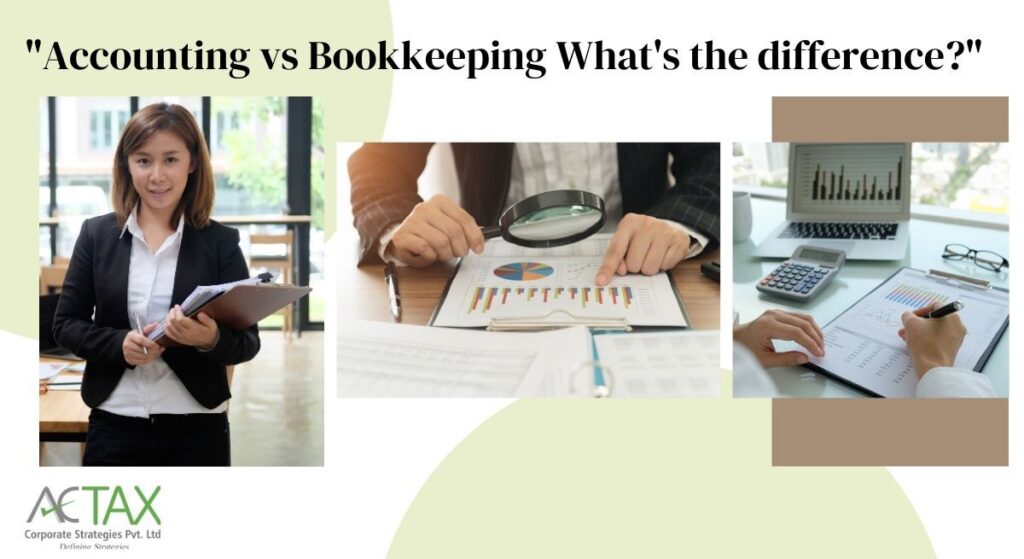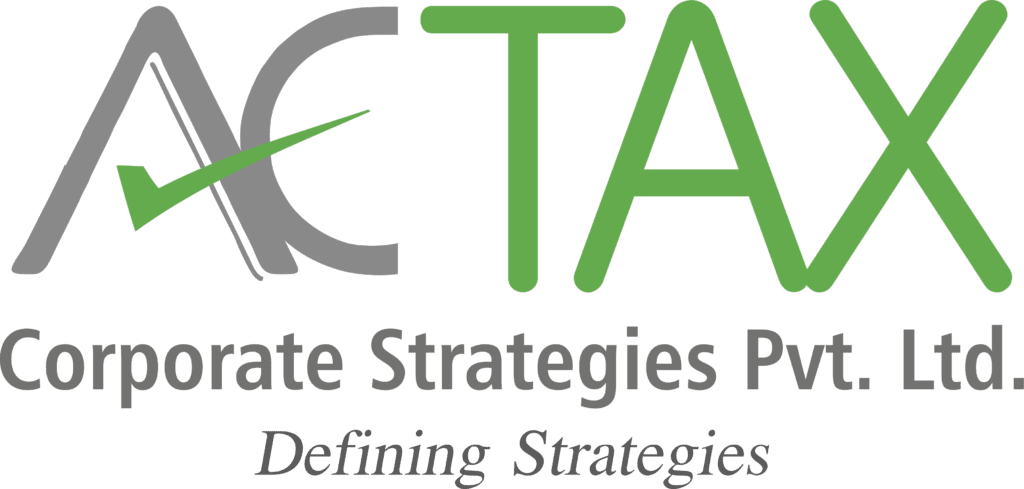Profit and loss accounts show the total income and expenses, and also show whether the business has earned more income than it has spent on its running costs. The profit and loss account represents the profitability of a business.
The profit and loss account is also known as a P&L report, an income statement, a statement of operation, a statement of financial results, or an income and expense statement.
Table of Contents
What is Profit & Loss statement (P&L statement)?
A Profit and Loss (P&L) statement, also known as an income statement, is a financial report that provides a summary of a company’s revenues, costs, and expenses over a specific period, usually a fiscal quarter or year.
The primary purpose of the P&L statement is to show whether a company is making a profit or incurring a loss during the given time frame. The P&L statement is a crucial financial document for assessing a company’s financial performance and profitability.
It provides valuable insights into the efficiency of its operations, the impact of expenses on earnings, and the overall financial health of the business. Investors, analysts, and stakeholders use the P&L statement to make informed decisions about a company’s performance and prospects.
Objectives of Profit & Loss Account
The primary objective of a Profit and Loss Account (P&L account) is to provide a summary of a company’s revenues, costs, and expenses over a specific period.
The main purposes and objectives of a P&L account are as follows:
- Determine Profitability: The primary goal of the P&L account is to determine whether a company has made a profit or incurred a loss during a specific period. By comparing total revenues with total expenses, the P&L account calculates the net income (profit) or net loss.
- Support External Reporting: External stakeholders, such as creditors, lenders, and regulatory authorities, use the information from the P&L account to assess a company’s financial position. It is an essential document for external financial reporting.
- Assess Financial Health: The P&L account is a key tool for assessing the financial health of a company. A consistent and positive net income indicates financial stability, while recurring losses may signal financial challenges that require attention.
- Provide Basis for Budgeting and Forecasting: Companies use historical P&L data as a basis for budgeting and forecasting future financial performance. It helps in setting realistic financial goals and expectations for the upcoming periods.
- Assist in Taxation: The P&L account is instrumental in determining the taxable income of a company, as income tax is calculated based on the profits reported in the statement.
Components of Profit & Loss Statements
The following are the key components typically found in a Profit and Loss account:
1. Revenue/Income:
- This is the total income generated from the sale of goods or services.
- It includes all sales-related activities, such as product sales, service fees, and any other sources of income directly related to the primary operations of the business.
How Revenue is Typically Presented and Understood in a P&L Account?
Definition of Revenue:
Revenue refers to the total inflow of economic benefits (cash or receivables) arising from the primary operating activities of a business. It includes sales of goods, fees for services rendered, interest, royalties, and other sources of income directly related to the business’s core operations.
Categories of Revenue:
Revenue can be categorized into different streams based on the nature of the business. Common categories include:
- Sales Revenue: Income from the sale of goods.
- Service Revenue: Income from providing services.
- Interest Revenue: Income earned from interest on loans or investments.
- Royalty Revenue: Income from licensing intellectual property.
Presentation in the Profit and Loss Account: In the profit and loss account, revenue is typically presented as the top line item.
Gross Profit: Gross Profit is calculated by subtracting the Cost of Sales (or Cost of Goods Sold) from the total revenue.
Operating Profit & Net Profit: Operating Profit is derived by subtracting operating expenses from gross profit, and Net Profit is calculated by further subtracting other income and expenses and income tax expenses from operating profit.
Importance of Revenue: Revenue is a key indicator of a company’s sales performance and its ability to generate income from its primary business activities. Increasing revenue is often a goal for businesses seeking growth and profitability.
Recognition Principles: Revenue is recognized in the period in which it is earned, regardless of when the cash is received (accrual basis accounting). Various accounting standards, such as the IFRS and GAAP, provide guidelines on when revenue should be recognized.
2. Cost of Goods Sold (COGS):
- This represents the direct costs associated with producing or delivering the goods or services sold.
- It includes the costs of raw materials, direct labor, and manufacturing overhead. For retail and trading businesses, it includes the cost of purchasing goods for resale.
Here’s how COGS is typically presented and understood in a profit and loss account:
Calculation of COGS: COGS= Opening Inventory + Purchases – Closing Inventory.
Opening Inventory is the value of inventory at the beginning of the accounting period, Purchases represent the cost of additional inventory acquired during the period, and Closing Inventory is the value of inventory remaining at the end of the period.
- Presentation in the Profit and Loss Account: In the profit and loss account, COGS is typically presented as a separate line item below the revenue section.
- Gross Profit: Gross Profit is calculated by subtracting the COGS from the total revenue.
- Importance of COGS: COGS is a crucial metric as it directly impacts a company’s gross profit margin, which is a key indicator of operational efficiency and profitability. Managing and controlling COGS is essential for businesses to improve their gross profit margins and overall financial performance.
- Inventory Valuation Methods: Businesses use various inventory valuation methods (such as FIFO, LIFO, or average cost) to determine the values of Opening Inventory, Purchases, and Closing Inventory, which, in turn, affect the calculation of COGS.
- COGS for Service-based Businesses: While COGS is more straightforward for manufacturing and trading businesses, service-based businesses may not have tangible goods. In such cases, COGS may include direct costs related to delivering services, such as labor costs and certain overhead costs.
Understanding and analyzing COGS is essential for assessing a company’s profitability, efficiency in managing production costs, and making informed decisions about pricing and inventory management. It provides insights into the direct costs associated with generating revenue from the sale of goods or services.
3. Operating Expenses:
- These are the costs incurred in the day-to-day operations of the business. These expenses are subtracted from the gross profit to calculate the operating profit in the Profit and Loss (P&L) account or income statement. Operating expenses are distinct from the cost of goods sold (COGS), which represents the direct costs associated with producing goods or services.
- Examples include salaries, rent, utilities, marketing expenses, and other overhead costs.
Here’s how operating expenses are typically presented and understood in a profit and loss account:
Definition of Operating Expenses:
Operating expenses, also known as OPEX, are costs incurred in the day-to-day operations of a business. These expenses are not directly tied to the production of goods or services but are necessary for running the business and maintaining its operations.
Common Operating Expenses:
Examples of operating expenses include:
- Selling, General and Administrative Expenses: Includes salaries, rent, utilities, office supplies, and other general costs.
- Research and Development (R&D)Expenses: Costs associated with developing new products or improving existing ones.
- Marketing and Avertising Expenses: Costs related to promoting and advertising products or services.
- Depreciation and Amortization: The systematic allocation of the cost of assets over their useful life.
- Travel and Entertainment Expenses: Costs related to business travel and client entertainment.
- Insurance Expenses: Costs associated with various insurance policies.
- Legal and Professional Fees: Costs for legal services and professional advice.
- Utilities and Rent: Costs associated with maintaining office space and utilities.
- Employee Benefits: Costs related to employee benefits, such as health insurance and retirement contributions.
Calculation of Operating Profit:
Operating profit is calculated by subtracting the total operating expenses from the gross profit.
The formula for operating profit is: Operating Profit= Gross Profit – Operating Expenses
Presentation in the Profit and Loss Account:
In the profit and loss account, operating expenses are typically presented as a separate section below the gross profit.
Operating Profit Margin:
The operating profit margin is a key financial metric calculated by dividing the operating profit by the total revenue. It reflects the efficiency of a company’s operations.
The formula is: Operating profit margin= (Operating profit/Total Revenue)*100
Monitoring these expenses helps businesses control costs and make informed decisions to improve their bottom line.
4. Operating Profit (Operating Income):
- Operating income is derived by subtracting total operating expenses from gross profit.
- It represents the profit generated from the core business operations before interest and taxes.
- Operating profit, also known as operating income or operating earnings, is a key financial metric that represents the profit a company generates from its core operating activities. It is a crucial figure in the Profit and Loss (P&L) account or income statement and provides insights into a company’s operational efficiency.
How operating profit is typically presented and understood?
- Calculation of Operating profit: The formula for calculating operating profit is:
Operating Profit = Gross Profit-Operating Expenses - Components of Calculation:
- Gross Profit: The difference between total revenue and the cost of goods sold (COGS). It represents the profit generated from the core business operations before deducting operating expenses.
- Operating Expenses: These include costs such as SG&A expenses, R&D expenses, marketing expenses, depreciation, and other costs directly related to the day-to-day operations of the business.
- Presentation in the Profit and Loss Account: In the profit and loss account, operating profit is typically presented as a line item after gross profit and before other income and expenses.
- Operating Profit Margin: The operating profit margin is a useful financial ratio calculated by dividing the operating profit by total revenue. It expresses the percentage of revenue that remains after covering operating expenses.
- Significance of Operating Profit: Operating profit provides insights into a company’s ability to generate profit from its core operations, excluding non-operational items such as interest and taxes. It is a key measure of operational efficiency and is closely monitored by investors, analysts, and stakeholders.
- Use in Financial Analysis: Operating profit is often analyzed in conjunction with other financial metrics to assess a company’s overall financial performance, profitability, and efficiency.
Understanding and monitoring operating profit is crucial for evaluating the financial health and sustainability of a business. It helps stakeholders gauge how well a company is performing in its core operations and provides valuable information for making strategic business decisions.
5. Net Income:
- Net income is the final figure on the Profit and Loss account, representing the company’s profit or loss after all expenses and taxes have been accounted for.
- Net income, also referred to as net profit or net earnings, is a key financial metric that represents the total profit or loss a company has earned after accounting for all expenses, taxes, interest, and other non-operating items. It is a critical figure in the Profit and Loss (P&L) account or income statement and provides a comprehensive view of a company’s overall financial performance.
- It is often referred to as the “bottom line.”
- It represents the profit available to shareholders or owners.
How net income is typically presented and understood?
- Calculation of Net Income: Total revenue includes all sources of income, and total expenses include operating expenses, interest, taxes, and other non-operating expenses.
Net Income = Total Revenue – Total Expenses - Components of the calculation:
- Operating Profit: The profit generated from the core business operations, calculated by subtracting operating expenses from gross profit.
- Other Income and Expenses: Includes interest income, interest expenses, gains or losses on the sale of assets, and other non-operating items.
- Income Tax Expenses: The amount of income tax owed based on the taxable income for the period.
- Presentation in the Profit & Loss Account: In the profit and loss account, net income is typically presented as the final line item.
- Significance of Net Income: Net income is a key measure of a company’s profitability and its ability to generate profit after covering all costs. It is used by investors, analysts, and stakeholders to assess a company’s financial health and performance.
- Earnings Per Share(EPS): Net income is often used in the calculation of Earnings Per Share (EPS), which represents the portion of a company’s profit allocated to each outstanding share of common stock.
Net income reflects the company’s ability to generate returns for its shareholders and is a key factor in financial decision-making.
6. Finance Cost:
- Finance cost refers to the total cost of obtaining and servicing financial resources or capital for a business.
- It encompasses a variety of expenses associated with financing activities, and it’s a crucial component in assessing a company’s overall financial health
- It reflects the cost of utilizing different forms of financing to support business operations and expansion.
Here are some key aspects of finance cost:
- Interest Expenses: The most common component of finance cost is interest on borrowed funds. This includes interest paid on loans, bonds, or other forms of debt.
- Bank Charges & Loan Fees: Finance costs may also include fees and charges associated with obtaining loans or credit facilities.
- Amortization of Debt Issuance Cost: When a company issues bonds or other debt instruments, there might be costs associated with the issuance. These costs are often amortized over the life of the debt and contribute to the finance cost.
- Interest on Finance Leases: If a company has entered into finance leases (leases that transfer substantially all the risks and rewards of ownership to the lessee), the imputed interest on these leases is considered a finance cost
- Foreign Exchange Losses: For companies operating in multiple currencies, fluctuations in exchange rates can lead to finance costs. This is particularly relevant if a company has taken loans in a currency different from its functional currency.
- Discounting of Provisions: In some cases, companies might have provisions for future expenses or liabilities. The finance cost may include the discounting of these provisions to present value.
- Commitment Fees: Companies might pay commitment fees to secure a line of credit, even if they do not fully utilize the credit facility. These fees are part of the finance cost.
- Interest on Overdrafts: Interest paid on overdraft facilities is considered a finance cost.
Finance cost is a significant factor in determining a company’s overall cost of capital. Understanding and monitoring finance costs are crucial for both management and stakeholders to make informed decisions about a company’s financial structure and performance.
7. Depreciation:
- Depreciation is an accounting method used to allocate the cost of a tangible asset over its useful life.
- Depreciation is not a cash outflow; instead, it is a non-cash expense that reduces the book value of an asset on the balance sheet.
Here are key points to understand about depreciation:
- Purpose of Depreciation: The primary purpose of depreciation is to match the cost of an asset with the revenue it generates over its useful life. This allocation of costs helps in determining the true profitability of a business.
- Types of Assets Depreciated: Depreciation is typically applied to tangible assets with a finite useful life, such as buildings, machinery, vehicles, and equipment. Land and certain types of intangible assets (like trademarks) are not depreciated because they are considered to have an indefinite useful life
- Methods of Depreciation: Several methods can be used to calculate depreciation. Common methods include:
- Straight-Line Depreciation: Allocates an equal amount of depreciation expense each year.
- Declining Balance (or Accelerated) Depreciation: Allocates a higher depreciation expense in the early years of an asset’s life.
- Units of Production Depreciation: Allocates depreciation based on the actual usage or production output of the asset.
- Useful Life: The useful life is an estimate of the number of years over which the asset is expected to provide value. It is an important factor in determining the annual depreciation expense.
- Residual Value: Residual value, also known as salvage value, is the estimated value of the asset at the end of its useful life. It is subtracted from the original cost to determine the depreciable amount.
- Depreciation Expense: Depreciation expense is the amount charged to the income statement each accounting period to reflect the reduction in the asset’s value. It is a non-cash expense, meaning that no physical cash is paid out.
- Accumulated Depreciation: Accumulated depreciation is the total depreciation expense recognized on an asset since its acquisition. It is subtracted from the original cost to arrive at the asset’s carrying value on the balance sheet.
- Book Value: Book value is the carrying value of an asset on the balance sheet. It is calculated as the original cost minus accumulated depreciation.
Depreciation is essential for accurately portraying a company’s financial health and profitability. It impacts financial statements, including the balance sheet and income statement, and is also considered when calculating certain financial ratios
8. Direct Expenses:
- Direct expenses are costs that can be directly attributed to the production of goods or the provision of services.
- Unlike indirect expenses (overhead costs), which are incurred for the overall operation of a business, direct expenses are directly tied to a particular product, service, or project.
Here are some common examples of direct expenses:
- Direct Materials: The cost of materials that can be easily traced to a specific product. For example, the cost of raw materials used in manufacturing a product is a direct expense.
- Direct Labor: The cost of labor directly involved in the production of goods or services. This includes wages, salaries, and benefits for employees who are directly engaged in manufacturing or delivering a product or service.
- Direct Expense in Manufacturing: Other direct costs incurred in the manufacturing process, such as packaging materials, freight and shipping costs related to the production process, and any other expenses directly associated with the creation of goods.
- Subcontractor Costs: If a business hires subcontractors or third-party service providers for specific tasks directly related to a project, the costs associated with these services are considered direct expenses.
- Direct Cost of Sales: In retail or trading businesses, the direct cost of sales includes the cost of purchasing or producing the goods that are sold. It may include the cost of inventory, transportation, and any additional costs directly related to getting the product ready for sale.
- Commissions: If sales commissions are directly tied to the sale of a specific product or service, they are considered direct expenses.
- Travel Expenses for Specific Projects: If travel expenses are incurred solely for a particular project or assignment, they may be considered direct expenses.
Direct expenses are crucial for businesses to accurately determine the cost of producing goods or services. Tracking these expenses helps in calculating the total cost of production, evaluating the profitability of specific projects, and making informed pricing decisions. The proper identification and allocation of direct expenses contribute to a more accurate financial analysis and effective cost management.
9. Purchases:
- Purchases typically refer to the cost of goods or inventory acquired by a business during a specific accounting period.
- Purchases are a key component of the cost of goods sold (COGS) section, and they play a significant role in determining the gross profit of a business.
How purchases are represented in a profit and loss account?
- Purchases: Purchases represent the total cost of raw materials, goods, or merchandise acquired by a business for resale or for use in the production process. This figure includes the cost of acquiring inventory, whether through direct purchases, manufacturing, or other means.
- Calculation of Cost of Goods Sold (COGS): The cost of goods sold is calculated by subtracting the closing inventory (the value of remaining inventory at the end of the accounting period) from the sum of opening inventory (the value of inventory at the beginning of the period) and purchases.
The formula for COGS is as follows: COGS = Opening Inventory + Purchases – Closing Inventory - Gross Profit: Gross profit is calculated by subtracting the cost of goods sold from the total revenue.
- Presentation in the Profit and Loss Account: In the profit and loss account, purchases are usually listed as a separate line item under the cost of goods sold section.
- Inventory Valuation Method: Businesses use various inventory valuation methods, such as FIFO (First-In-First-Out), LIFO (Last-In-First-Out), or average cost, to determine the cost of goods sold and the value of ending inventory. The choice of method affects the calculation of purchases and, subsequently, the gross profit.
Understanding the purchase component in the profit and loss account is crucial for assessing the cost structure of a business, determining gross profit margins, and evaluating the overall profitability of the core operations. It provides valuable insights into the efficiency of inventory management and its impact on the financial performance of the business.
10. Cost of Sales:
- Cost of Sales (COS), also known as Cost of Goods Sold (COGS) is a crucial component in the Profit and Loss (P&L) account or income statement.
- It represents the direct costs associated with the production or acquisition of goods that a company sells during a specific period.
How Cost of Sales is typically presented and calculated in a profit and loss account?
- Calculation of Cost of Goods Sold (COGS): Cost of Sales includes the direct costs associated with the production or purchase of goods.
- Presentation in the Profit and Loss Account: In the profit and loss account, Cost of Sales is typically presented as a separate line item below the revenue section.
- Gross Profit: Gross Profit is calculated by subtracting the Cost of Sales from the total revenue.
- Importance of Cost of Sales: Cost of Sales is a critical metric because it directly impacts the gross profit margin.
- Components of Cost of Sales: Components of Cost of Sales may include direct labor, direct materials, manufacturing overhead, and other costs directly associated with the production or acquisition of goods.
- Inventory Valuation method: Businesses use various inventory valuation methods (FIFO, LIFO, average cost) to determine the values of Opening Inventory, Purchases, and Closing Inventory, which, in turn, affect the calculation of Cost of Sales.
Understanding and analyzing the Cost of Sales is essential for assessing a company’s profitability and efficiency in managing production or inventory costs. It provides insights into the direct costs incurred to generate revenue and is a key metric for financial analysis and decision-making.
Understanding these components helps stakeholders assess a company’s financial performance, profitability, and operational efficiency over a specific period.
Conclusion
In Conclusion, the Profit and Loss Statement helps in measuring the activity of the business over the period and its net earnings. It summarizes the revenue and expenses of the company for the period which is important for analyzing the source of money and the application of the money out of business.






